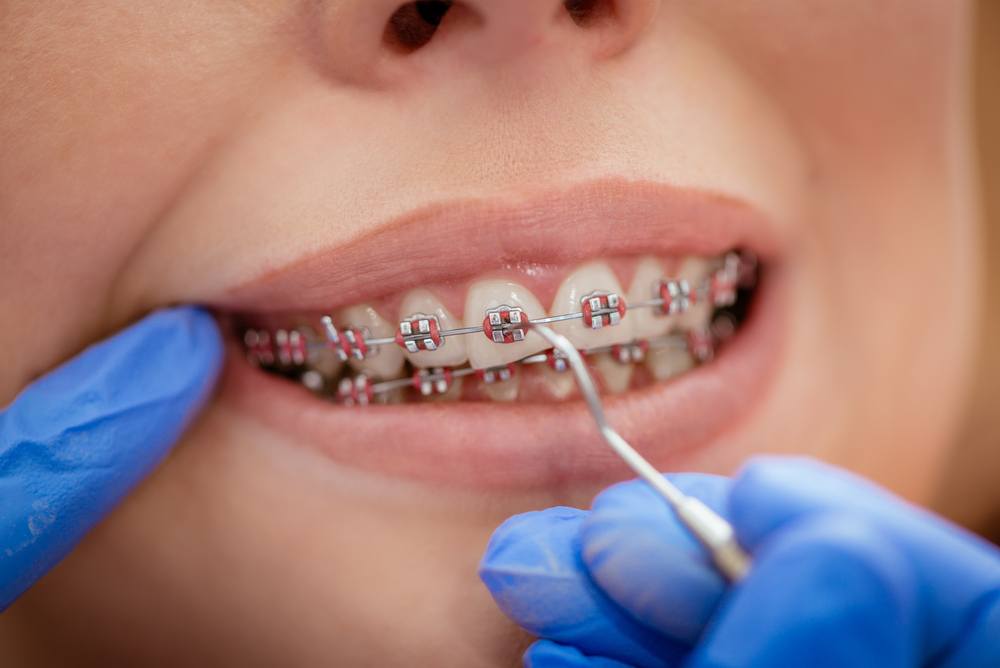Comprehensive Guide to Orthodontics Treatments for Fixing Oral Misalignments
Recognizing the intricacies of each procedure, including their devices, advantages, and potential downsides, is vital in making notified choices concerning one's orthodontic treatment. As we navigate with the comprehensive overview to orthodontic procedures for correcting oral imbalances, the detailed information of each technique will certainly unfold, dropping light on the path toward a unified and functional oral positioning.
Orthodontic Procedures Summary

In enhancement to clear aligners and typical braces, orthodontists may additionally suggest other treatments like headwear, palatal expanders, or retainers to deal with particular positioning concerns (orthodontist). These treatments are tailored per client's one-of-a-kind needs and might entail a combination of treatments to achieve the preferred results. Routine modifications and surveillance are critical parts of orthodontic treatment to ensure progression gets on track and to make any required modifications along the method. By going through orthodontic procedures, patients can not just accomplish a straighter smile however likewise boost their overall dental health and feature.
Standard Braces: How They Function
When considering orthodontic treatments for dental misalignments, conventional braces stand apart as a reliable technique for correcting teeth placing. Traditional braces contain brackets, cords, and bands that interact to use continual pressure on the teeth, slowly relocating them into the wanted alignment. The braces are connected to the teeth making use of an unique adhesive, and the wires are threaded through the braces. By changing the stress of the cords, orthodontists can control the instructions and pressure put on each tooth, guiding them right into correct positioning over time.
As stress is applied to the teeth through the dental braces, the bone bordering the teeth is reshaped to support the brand-new tooth positions. Individuals will certainly require routine adjustments at the orthodontist's workplace to ensure the dental braces continue to use the proper pressure for efficient teeth motion.
Unnoticeable Aligners: Benefits And Drawbacks
These clear, tailor-made trays are practically undetectable when worn, making them an enticing choice for individuals seeking an extra aesthetically pleasing orthodontic treatment. Individuals can remove the aligners prior to eating or brushing their teeth, minimizing the threat of food getting stuck in the device and simplifying the cleansing procedure.

Surgical Orthodontic Options
Surgical interventions in orthodontics existing feasible alternatives for addressing complex dental misalignments that might not be properly settled via traditional orthodontic therapies. While undetectable aligners and conventional dental braces can correct lots of orthodontic problems, particular situations call for medical intervention to achieve ideal outcomes. Surgical orthodontic options are normally advised for extreme malocclusions, significant jaw discrepancies, and cases where the underlying bone structure requires adjustment to accomplish appropriate alignment.
One usual medical orthodontic procedure is orthognathic surgical treatment, which entails rearranging the jaws to remedy functional issues such as trouble talking or eating. This surgical treatment is typically done in partnership with an orthodontist who assists align the teeth before and after the procedure. Surgical orthodontics may likewise include treatments to expose affected teeth, remove excess periodontal tissue, or improve the jawbone to create an extra unified facial profile.
Prior to thinking about surgical orthodontic choices, individuals go through a comprehensive examination to establish the need and prospective benefits of such treatments. cumming braces. While surgical procedure may seem complicated, it can significantly enhance both the feature and looks of the smile in instances where traditional orthodontic treatments fall short
Retainers and Post-Treatment Care

Failing to abide with post-treatment care instructions can result in regression, where the teeth progressively relocate back towards their initial positions. Regular retainer wear, great oral health, and routine oral examinations are crucial for preserving the outcomes attained through orthodontic surgery and making sure the long-lasting stability of the dealt with dental placement.
Final Thought
In conclusion, orthodontic walk in dentist office procedures use different alternatives for remedying dental imbalances. Surgical orthodontic choices are readily available for much more serious misalignments. Generally, orthodontic treatments can successfully improve dental health and visual look.
As we browse via the thorough overview to orthodontic treatments for dealing with oral misalignments, the intricate details of each method will certainly unfold, shedding light on the path toward a practical and harmonious dental alignment. - invisalign
One of the most typical orthodontic therapies is the use of braces, which are composed of steel brackets and wires that apply gentle pressure to slowly shift teeth into the preferred setting.When taking into consideration orthodontic therapies for oral misalignments, conventional braces stand out as a reliable technique for dealing with teeth placing. Additionally, undetectable aligners may not be appropriate for complex orthodontic concerns that need even more significant teeth movement, as they are generally recommended for mild to modest instances. Retainers are tailor-made orthodontic tools created to hold teeth in their dealt with settings after the conclusion of orthodontic therapy.